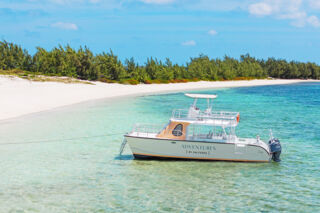Turks and Caicos Bonefishing
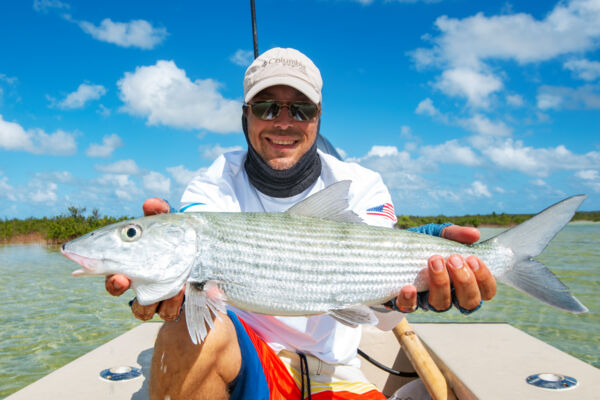
Incredible bonefishing can be found in the Turks and Caicos Islands if you know where to look. The Caicos Islands, which is the larger of the two island groups that make up the Turks and Caicos archipelago, have extensive marine flats and wetlands adjacent to the Caicos Banks that are exceptional for bonefishing and flats fishing.
The Turks Islands, which include Grand Turk and Salt Cay, do have some flats and shallows. However, their extents are far less than those in the Caicos Islands.
For the serious angler using the services of a guide and vessel, South Caicos is likely the best island for bonefishing (North Caicos and Providenciales can be equally fruitful at times). For a DIY angler who will be wading, North Caicos and Middle Caicos are the best locations for bonefishing.
Bonefish are most commonly encountered in shallows that are 1–2 feet (0.3 to 0.6 m) in depth. The typically great water clarity allows for the fish to be clearly seen by the angler.
Equipment
For bonefish, a 7- to 9-weight fly rod is recommended. For larger tarpon and barracuda, it's best to use 10- to 11-weight fly rods.
It’s often quite windy in the Turks and Caicos, so having a light spinning rod with heavier tackle (such as a jig head with an artificial lure or a casting jig) often works well for hooking bonefish in all areas other than the few spots regularly fished by anglers.
The water temperature in the Turks and Caicos is typically warm year-round, especially in the flats, and most anglers do not find waders or cold-weather gear necessary. The bottom in some locations can be a little rough, so waterproof footwear is advisable.
It’s important to have sufficient sun protection when bonefishing. Long sleeves, sunscreen, a hat, and polarized sunglasses are highly recommended. Polarized sunglasses make it much easier to see into the water, as they reduce surface reflections.
A dry bag or Pelican-style box is great for phones and other items that need to remain dry. On most days, expect spray on the boat from the wind chop.
Licenses
Visitors fishing in the Turks and Caicos must have a valid fishing license. Daily or monthly licenses may be purchased at many marinas on Providenciales or from the Fisheries Department.
Equipment Sales
There’s a limited number of shops that stock fishing equipment in Turks and Caicos. Walkin Marine on Providenciales is the primary source. The store does not carry fly rods or much in the way of fly fishing equipment.
Equipment Rental
Fly rods can be rented from some of the Turks and Caicos bonefishing guides.
Fish Species
When flats fishing in the Turks and Caicos, bonefish, barracuda, and permit are common. Tarpon and snook are more rare, yet it's possible to catch them.
Bonefish
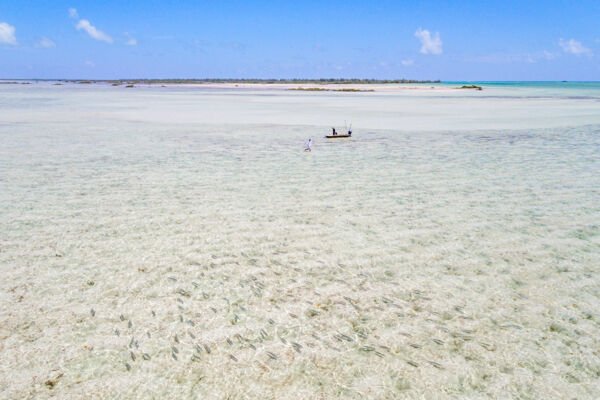
Bonefish are the bread and butter of flats fishing in the Turks and Caicos, and they can be found throughout the Caicos Islands. These fish are typically found swimming in schools that can number between 6 and 20 individuals in the further reaches of the tidal creeks and 50 to 100 individuals in some of the sounds, such as Bottle Creek, or near South Caicos. It’s not unknown to see some truly impressive schools of hundreds of bonefish at locations such as Ship Channel, which is a shallow channel and navigation route in the center of the Caicos Banks.
Bonefish size in the Turks and Caicos varies, with 1–5 pound (0.5 to 2.3 kg) bonefish being common and 11-pound (5 kg) bonefish at the larger end of the range. Heavier fish exist, yet are unusual to catch.
Permit
Permit is a regular catch in the Caicos Islands, especially between small cays or where a channel exists in the flats. Permit are not as common as bonefish, yet can be found with regularity in their favored locations and environments.
Schools of permit, which occasionally can be large, can be seen in the right channel settings, or in spots such as the deeper sections of Bottle Creek on North Caicos.
Barracuda
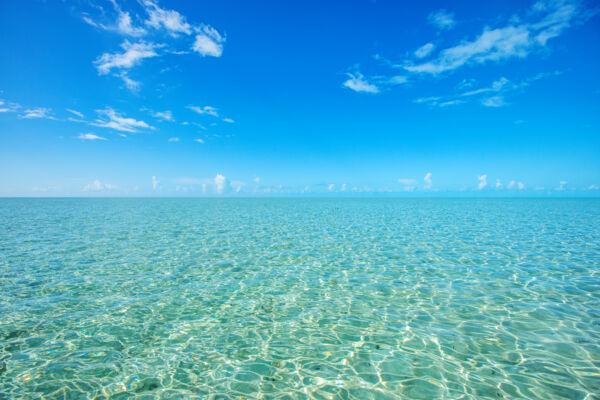
Barracuda is found in more locations and environments in the Turks and Caicos than any other gamefish. They can even be found in small landlocked ponds quite a distance from the coast. Some truly impressive examples can be found in the remote channels between the small cays, where they practice ambush feeding on the smaller fish that thrive on the interchange between the flats and bays.
While barracuda perhaps doesn’t have the recognition that the other flats gamefish have, they can put up a significant fight (the larger barracuda common in the islands will be a challenge to land on a light setup). These fish are often quite responsive to surface casting. In the transitions between the flats and channels, where the larger barracudas can be found, bar jacks, blue runners, and horse-eye jacks are also likely catches. In the shallower areas, barracudas often tend to be the same size as bonefish (typically in the 16- to 22-inch, or 41- to 56-centimeter, range).
Tarpon
Tarpon is present in the Turks and Caicos, yet is far less common than bonefish. It’s a bit of an unusual situation with tarpon in the islands, as juveniles and smaller examples are somewhat common in atypical locations such as inland ponds that have limited or no tidal connection, or inside the actual feature of the Boiling Hole on South Caicos.
Large tarpon can be seen and caught, but these are rare occurrences. Often, a single mid-sized or larger fish will be in a washout or channel that offers a bit more depth than the surrounding flats, and they may also be seen in washouts in shallow seagrass shoals on the bays off the northern sides of the Caicos Islands.
Snook
Snook is occasionally caught in the Turks and Caicos, yet is quite uncommon. The Turks and Caicos has some skilled and experienced fishing guides, yet if any of them are able to reliably get an angler on snook, they excel at keeping their locations secret. In the substantiated cases of snook being landed, the fish tend to be caught in shallow seagrass beds or shoals in sheltered bays.
Protected Areas
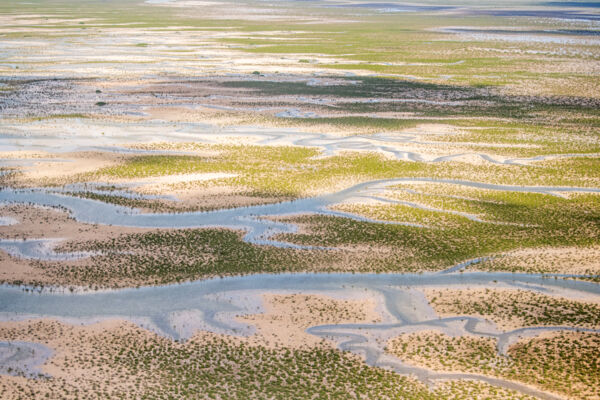
The Turks and Caicos has many protected areas where fishing is prohibited. Such areas include nature reserves, national parks, and nature sanctuaries.
The reality of Turks and Caicos bonefishing is that many or most of the professional guides operate charters regularly in either the Ramsar Nature Reserve, the Little Ambergris Cay Nature Reserve, or the East Bay Islands National Park, wherein fishing is not allowed.
Catch and release flats fishing likely does limited harm to the environment. The local Department of Environment and Coastal Resources (DECR) has explored changes in the laws to allow for it, yet with no result as of yet and no foreseeable decision.
Enforcement of the law is an interesting situation in the Turks and Caicos, with apparent selective enforcement. A DIY angler bonefishing via wading or paddleboard on Providenciales is more likely to encounter difficulties than a professional guide fishing in the Ramsar Nature Reserve.
Bonefishing Guides
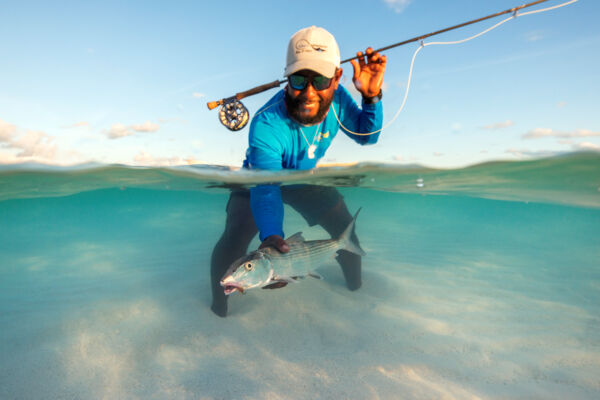
There are around a dozen established Turks and Caicos bonefishing charter companies, with half of the companies based on Providenciales and the remainder distributed across North Caicos and South Caicos. Most guides operate flats boats such as Heron, Hewes, or Sea Chaser vessels in the 16–22 foot (4.9 to 6.7 m) range. A few guides on South Caicos also operate airboats, due to the very shallow depths north of the island.
Charters departing from Providenciales typically travel east to North Caicos, Middle Caicos, or as far as East Caicos on a full-day trip. Wind is often 15–20 knots out of the east, which can result in a slightly bumpy ride. On the way back, the ride is often smoother.
A few airboats are used on charters from South Caicos, which in that area are superior to conventional flats skiffs due to the very shallow depths between South Caicos and the nearby Hog Cay and East Caicos. In Stake Bank and Southern Bush Bay, which are very shallow banks to the north of South Caicos, depths are often around 6 inches (15 cm) for extensive distances, and conventional flats vessels with outboard engines have difficulties navigating them. The tidal creeks and sounds off North Caicos (and to a lesser extent, Middle Caicos) are slightly deeper, which allows for skiffs and flats boats.
Charter rates are high compared to many other countries, and this is largely due to high fuel costs, long transit distances, and the general high cost of living in the Turks and Caicos.
DIY Bonefishing
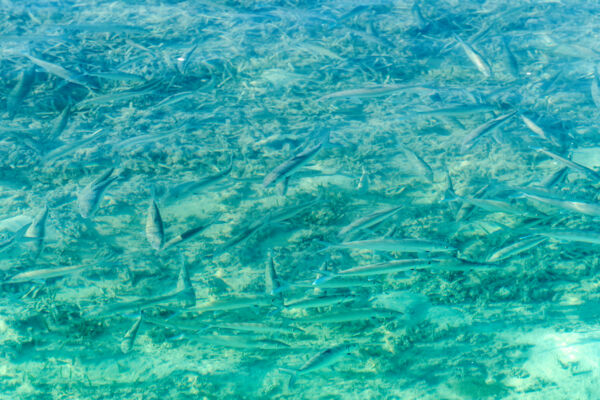
As may be expected, the less-visited and less accessible flats generally have the best fishing. Such locations tend to be only accessible via boat, and transit times can be 30–60 minutes from the populated islands. However, acceptable DIY bonefishing is possible if you know where to go.
Be aware that any vessel used for fishing must be registered for fishing. This includes kayaks and paddleboards. Enforcement of this is more likely on and around Providenciales than on the other islands in the country.
Islands
North Caicos and Middle Caicos excel for DIY bonefishing. Providenciales does have accessible bonefishing locations, yet as they tend to be fished more often, the fish can be quite skittish.
North Caicos and Middle Caicos
The two large central islands of North Caicos and Middle Caicos are connected by a road causeway, so they essentially function as one island. Many flats and tidal creeks across both islands are accessible via road.
While there are protected areas on North Caicos and Middle Caicos, they do not typically impact DIY fishing. Exceptions are the Dick Hill Creek and Bellefield Landing Pond Nature Reserve (which is adjacent to the north of the Bellefield Landing ferry dock) and a small section of the East Bay Islands National Park (which is adjacent to the Greenwich Creek inlet into Bottle Creek, found at the eastern end of Horsestable Beach). Essentially all other flats and shallows easily accessible from the road are not protected.
Providenciales
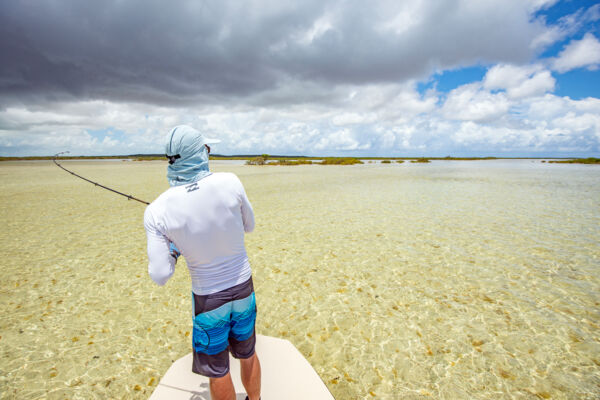
Providenciales is home to the majority of the population in the Turks and Caicos, and likewise welcomes the vast majority of overnight visitors. There are numerous protected areas to consider when fishing on Providenciales—consequently, the legal fishing spots tend to be visited more often than those on other islands.
The sounds and flats accessible via Venetian Road and Cooper Jack Bay Road—which includes Juba Sound, Flamingo Lake, Turtle Lake, and Cheshire Hall Creek—tend to be the best spots for DIY fishing. Other spots where bonefish can be found are sheltered and shallow sections of beach, which are typically the easternmost edges of the beaches on the south coast.
Fishing is prohibited in the Chalk Sound National Park and the Frenchman's Creek and Pigeon Pond Nature Reserve.
South Caicos
South Caicos has many flats locations accessible by land. Such locations include Stake Bank, the southern edge of which can be accessed from a road near the northern end of the South Caicos Airport. However, to do justice to the fishing opportunities near the island, it’s best to use a charter or perhaps a kayak in the case of proficient paddlers.
From Jerry Camp, which is an informal boat and kayak launching spot on the northern peninsula of the island, a kayak or paddleboard can access the channels and sounds near Plandon Cay, Middle Creek Cay, and McCartney Cay.

